The creeping herbaceous perennial plant, saltyrolia, is part of the Nettle family. The stems are long, threadlike, covered with small oval foliage, which has a bright green color. Small inflorescences are white or cream colored.
Content
Features of saline
Under natural conditions, saline, which is also called gelxina, can be found in the tropical Mediterranean, as well as in Corsica and Sardinia. She prefers to grow on river and lake shores. Indoors, the flower is cultivated as a ground cover plant. Gelksin is most often used to create greenhouse compositions. In the wild, you can meet only 1 type of saltium. And in indoor conditions, 4 varieties are cultivated, while 2 of them are very rare, therefore, flower growers rarely decorate their houses with them. There is nothing difficult in growing this flower, but it still has its own characteristics and tricks.
Saltrolia care at home
Since in nature, saltium grows only in a tropical climate, you need to be prepared for the fact that in culture for the normal growth and development of this flower, it will need to create optimal conditions. For this, a certain temperature regime is maintained, and special attention is paid to irrigation, air humidity, fertilizing, etc.
Illumination
Gelksina is one of the light-loving plants. In this regard, if you choose a place with poor lighting in the room for it, then after a little time it will turn into an unattractive bush. The fact is that with a lack of light, the stems become elongated, and most of the foliage flies around. Experienced florists recommend that you put salt on a north-facing window, but at the same time it will definitely need additional lighting. If she receives the required amount of light, then this will certainly have a beneficial effect on the state of her foliage, which will become denser, juicy and shiny. When choosing a place for a plant, remember that direct rays of the sun should not fall on the surface of its foliage, as this can cause sunburn on it, which can cause browning and death of the leaf plates.If the lighting is bright, but diffused, then the flower will grow and develop within normal limits.
Temperature regime
In the warm season, the optimum temperature for saltium is about 20 degrees. Remember that in the room where the flower is located, in no case should it be hotter than 25 degrees. If the temperature in the room is more than 20 degrees, then the bush should be regularly and quite often moistened with a spray bottle, also try to increase the humidity level in other ways.
In winter, make sure that the room is no colder than 15 degrees. When the temperature drops to 8 degrees and below, the flower dies. In winter, the moistening of the bush from the spray bottle is carried out systematically 1 time in 7 days. Do not place it near a working heating appliance, because the hot air can destroy the flower.
Watering
Do not allow the earthen coma to dry out in the container, as this will disrupt the growth and development of the plant, and will also negatively affect its decorative effect. Make sure that the soil mixture in the pot is always a little damp, but at the same time, liquid stagnation in the roots should not be allowed, because this can develop rot. In this regard, during planting of a flower, a good drainage layer is made at the bottom of the pot, for this you can use small expanded clay. While the flower is young, it needs to be watered systematically once every couple of days; older plants are subjected to this procedure less often, or rather, no more than twice every 7 days (immediately after the top layer of the soil mixture dries out). In the cold season, saline should be watered about 1 time in 7 days.
Suitable soil mixture
This culture prefers a loose earthy mixture that allows air to pass through well. For example, the substrate can consist of sand, leaf turf and peat (1: 1: 1), or you can purchase a ready-made soil mixture for palm trees. When transplanting young plants, remember to make a good drainage layer at the bottom of the pot.
Salineolium transplant
The transplant is carried out in the spring. To do this, you can use a soil mixture, the composition of which is described above. You can also take another soil mixture, the main thing is that it is loose and passes water well, the acidity can be low or neutral. Soleirolia is a delicate and very fragile plant. In this regard, when transplanting, the bush must be taken along with a lump of earth. When transferring a flower from an old container to a new one, be sure to hold the stems, as they can easily be injured.
In order for the root system of the flower to develop normally, it is recommended to choose a low and wide pot for transplanting, do not forget to make a good drainage layer at its bottom, for this you can use small expanded clay or vermiculite. When the bush is replanted, slightly compact the surface of the soil mixture in the container, and then water it abundantly.
Fertilizer
Salleurolia is fed in spring, summer and in the first autumn weeks. In winter, she does not need additional feeding. For feeding, a complex mineral fertilizer is used for decorative leafy plants, they are carried out systematically at intervals of twice a month. You can understand that the plant lacks nutrients by its appearance, in this case the stems will become elongated, and the foliage will become faded.
Bloom
Salleurolium begins to bloom in the spring. If it grows naturally, then it will bloom for about 8 weeks and is quite lush. At this time, each shoot is decorated with small inflorescences, which consist of small flowers of a cream or white color, which, although they do not represent a special decorative value, look pretty cute. When the flowers die off, no fruit is formed in their place.
Pruning
This flower is very rarely cut off, but it tolerates this procedure completely painlessly. If desired, using a haircut, the gardener can give the plant a certain spectacular shape.In order for the bush to be more lush and spectacular, it is recommended to carry out a small thinning of its stems in early spring. This will stimulate the growth of the bush, and after a while it will become thicker and more beautiful.
Dormant period
Like many home-grown plants, helxina has a dormant period during the winter. That is why in the cold season they take care of her a little differently. At this time, the soil mixture in the pot should be moistened approximately 1 time in 7 days, and fertilization is not necessary, since the flower does not need them in winter. Also, special attention should be paid to the air humidity in the room where the salt solution grows, since it can greatly decrease due to the working heating devices. To maintain a suitable humidity level, place open containers filled with water or a humidifier near the bush, and regularly moisten the foliage with water from a sprayer once every 7 days. When spring begins and the dormant period ends, they begin to look after the flower in the same way as described above.
Reproduction methods
After planting a young saline bush, you need to be prepared for the fact that after only 4 years it will begin to gradually lose its decorative effect. That is why you need to take care of updating it, namely, about the available methods for propagating this flower. It can be propagated by seed, cuttings, stems rooting and dividing the bush.
Seed reproduction
In order to grow Helxinia from seeds, you first need to buy them. It is recommended to do this at a specialist store. Sowing of seeds is carried out in a container, which is pre-filled with a soil mixture intended for growing palm trees. After sowing is complete, gently moisten the surface of the soil mixture from the sprayer with clean water. After that, the container is covered with a film (glass) on top and transferred to a place where it is always warm, while the crops need a large amount of bright, but diffused light. Do not forget to regularly ventilate them, for this, opening the shelter for a while, and also timely moisten the substrate from the spray bottle. When the seedlings appear and grow a little, they should be sorted out into individual pots.
Dividing the bush
It is quite easy and quick to multiply saltyrolia by dividing the bush. To do this, during transplantation, a part of it is separated from the overgrown bush, which is taken together with a lump of earth. Delenki are planted in individual pots. Since this method of plant propagation is extremely simple, it is most popular with flower growers.
Cuttings
If desired, you can grow helxinia from cuttings. To do this, cut off several branches from the parent bush. For rooting, the resulting cuttings are planted in a mixture consisting of peat and sand. Instead, they can be placed in water where they will root just as quickly. As a rule, the rooting of cuttings lasts about 20 days, after which they are transplanted into permanent pots and cared for as an adult flower.
Rooting stems
In order to get a young saline bush, you can use such a reproduction method as rooting shoots. For this, the branch is not cut off, but simply bent to the surface of the substrate in a pot and sprinkled on top with a layer of soil mixture. In just a few months, a process will form, which will have its own roots. After that, it is cut off from the mother bush and planted in a permanent pot.


Watch this video on YouTube
Diseases and pests
The salturolium plant has a very high resistance to harmful insects and diseases. However, if she is not provided with good care and optimal conditions for growth, then problems may arise with her, for example:
- Gray rot... You can understand that the plant is affected by gray rot by the gray fungal bloom that forms on the surface of the foliage. As soon as plaque is detected, you need to immediately cut off all affected stems, and even reduce the amount of watering and air humidity. If everything is done in a timely manner and correctly, then the flower will not die.
- Brown rot... As a rule, the stems are affected by this disease, which makes them thinner and dry. As soon as the first signs of the disease are noticed, spray the bush with a solution of the "Rovral" agent, while you must follow the instructions. In order to prevent it, it is recommended to cut off all dead foliage and shoots from the bush in a timely manner.
- Whitefly... If a whitefly settles on saltyrolia, then this can be understood by twisting, yellowing and dying off of the leaves. In order to get rid of this pest, the flower is treated with a solution of the fungicidal preparation Aktara.
- Spider mite... Drying and dying leaf plates are most often a sure sign that a spider mite has settled on a flower. As soon as the first signs of the presence of the pest are found, spray the bush with Fitoverm.
- The bush is dead, can you save it? Despite the fact that Helksinia is a rather capricious plant, it is very tenacious. If, through an oversight of the grower, the bush is completely dry, it can still be saved. To do this, cut off all dried shoots, and plant the roots in a new pot and in a fresh substrate. After just 4 weeks, the bush will again become lush and beautiful, but only if you take proper care of it.
Types of salt with photos and names
Soleirolia Argentea
This species is a herbaceous low ground cover plant with creeping thin stems. The plant has a threadlike root system. On each of the thin branches there is a large number of small oval-shaped leaf plates that have a silvery tint. In indoor conditions, this species blooms very rarely, while small flowers of a cream or white color are formed, which do not represent any decorative value.
Soleirolia Variegata
The stems of such a ground cover herbaceous low plant are very fragile and thin. They grow a large number of small oval green foliage, along the edge of which there is a thin white border. When grown at home, flowering is very rare, while small white inflorescences are formed on the bush, which are considered unattractive.
Soleirolia aurea
This short plant has thin creeping stems that are covered with lush foliage. The shape of the leaf plates is oval, and they are painted in a golden-green hue. When cultivating this variety in indoor conditions, you most likely will not be able to see how it blooms. The fact is that in this variety, only one bush out of a hundred blooms in indoor conditions.
Soleirolia Green
This variety has a compact and miniature bush, in diameter it can reach only about 20 centimeters. The stems are long, thin and fragile, with dark green small leaves growing on them. If you provide such a flower with optimal care, then it will turn into a very effective little bush, which is often used when creating living interior compositions.
Superstitions and omens
As saltyrolia is a very hardy plant, it is suitable for beginner flower growers. And it can also be safely grown in a house where there are pets or children, since this flower does not contain any toxic substances.
Experts say that this plant helps to neutralize the negative in the house, as well as to strengthen the health of its owner. It can also absorb negative energy emitted by household appliances and refresh the atmosphere with its positive energy.
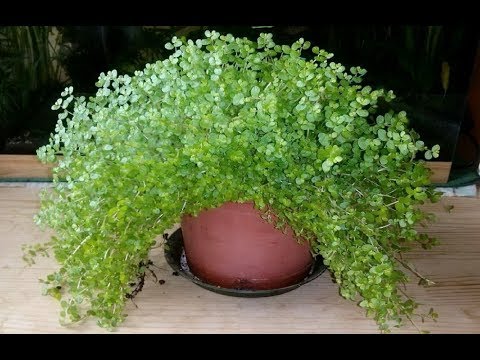

Watch this video on YouTube

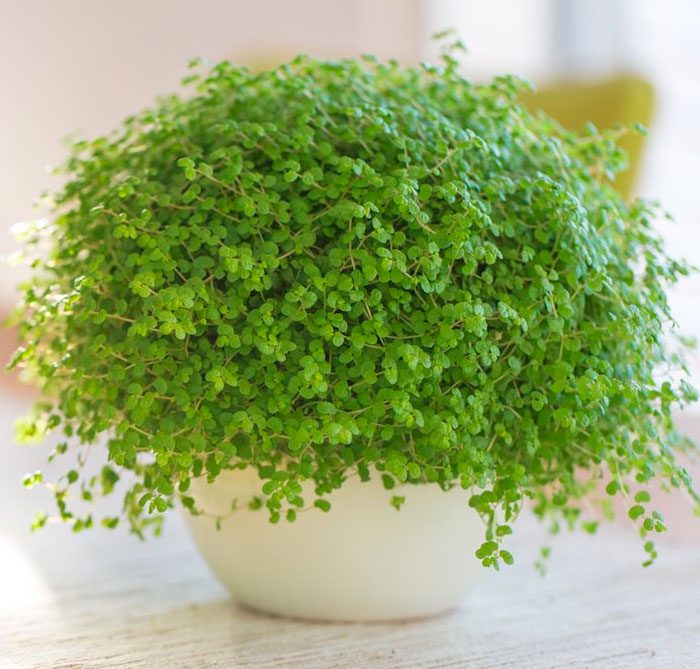
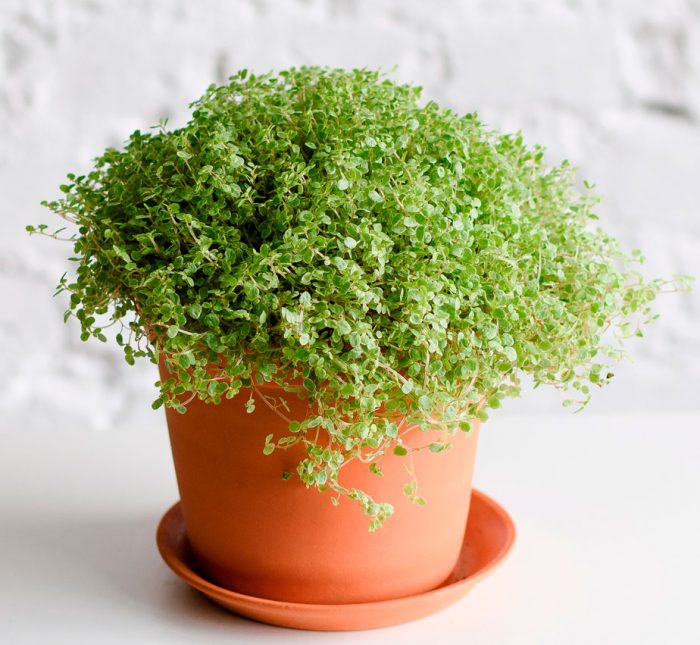
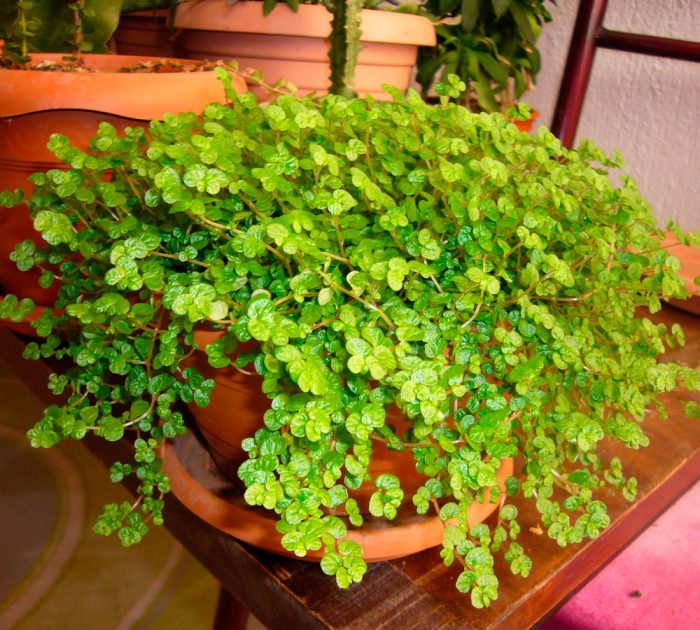
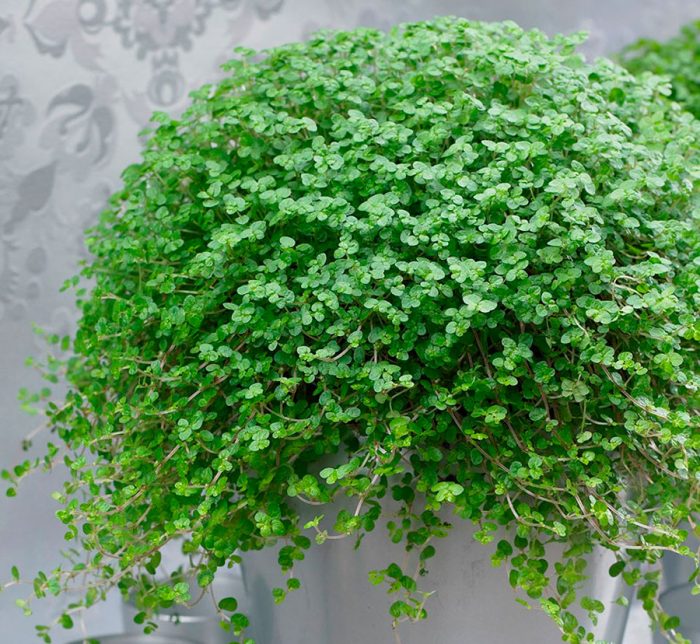
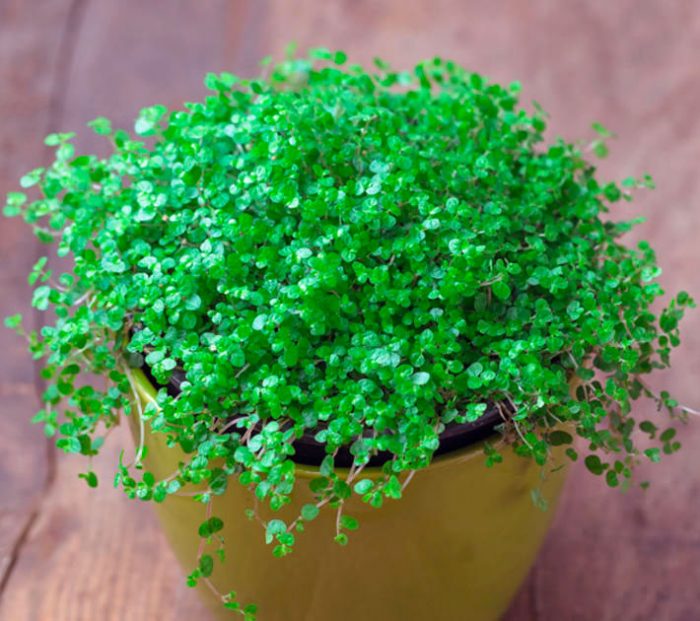
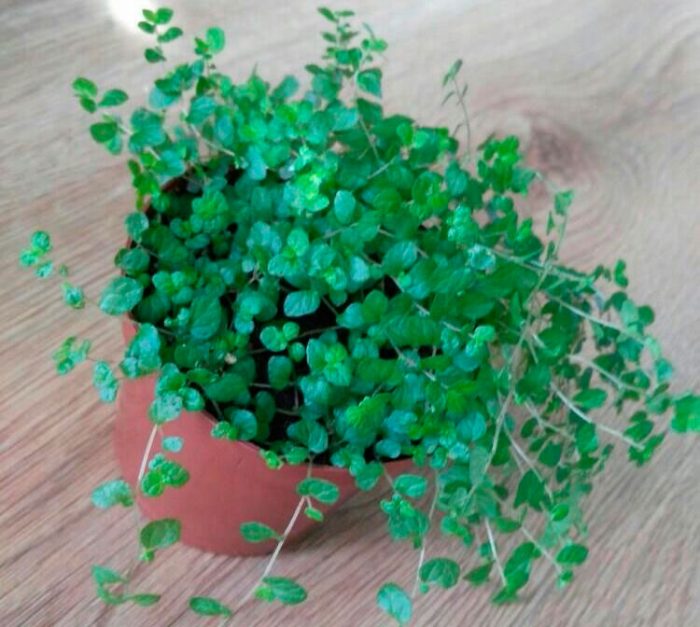

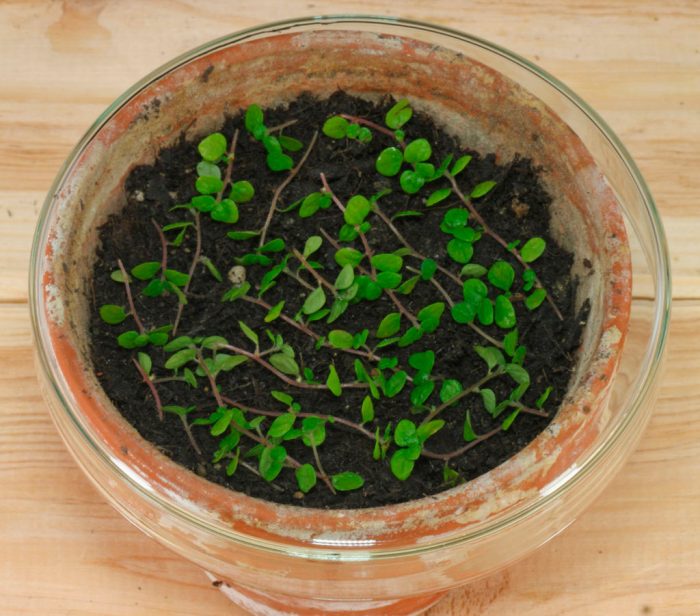
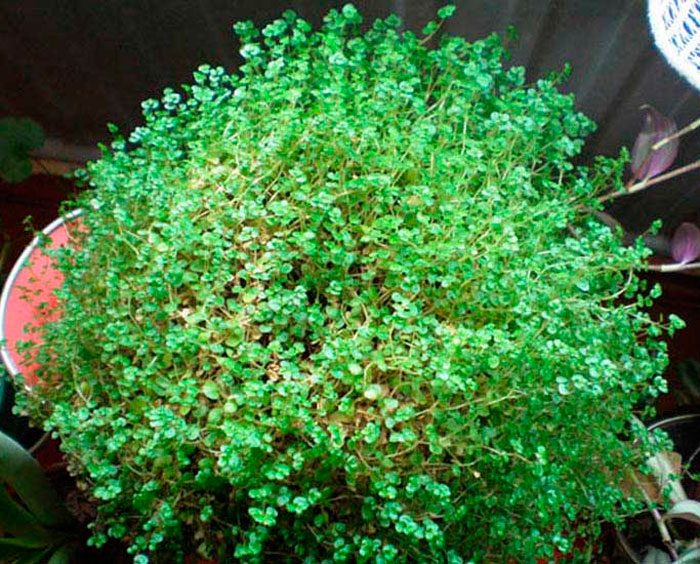
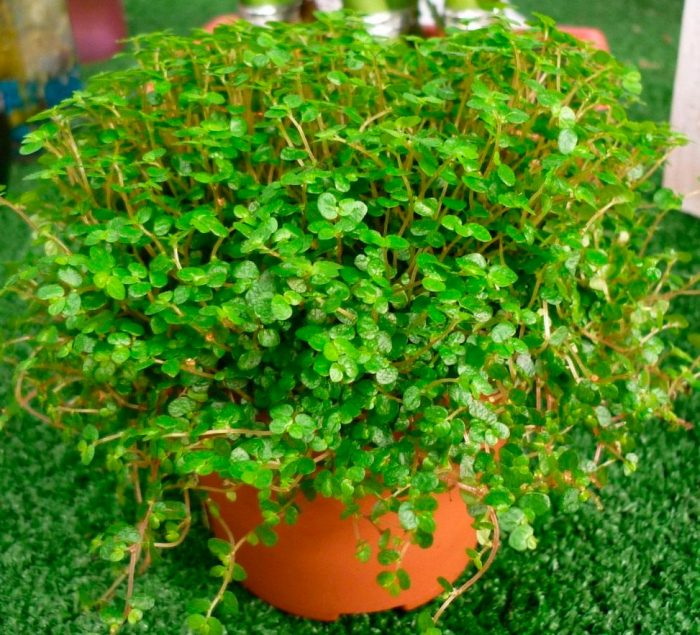
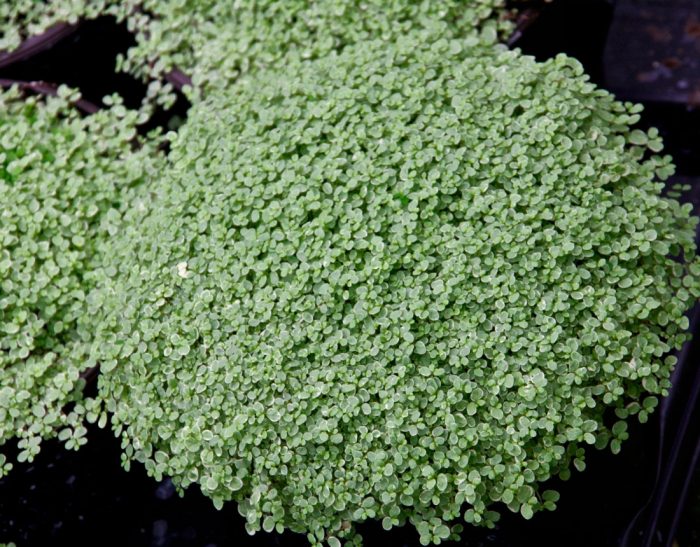
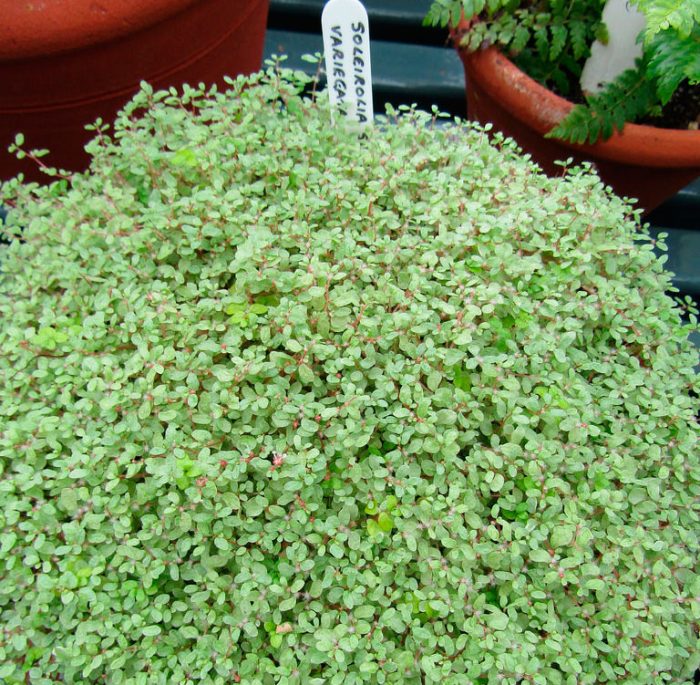
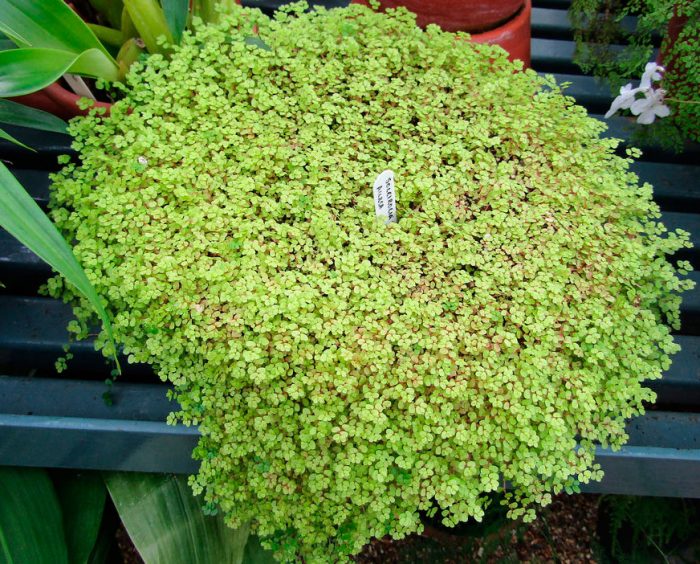
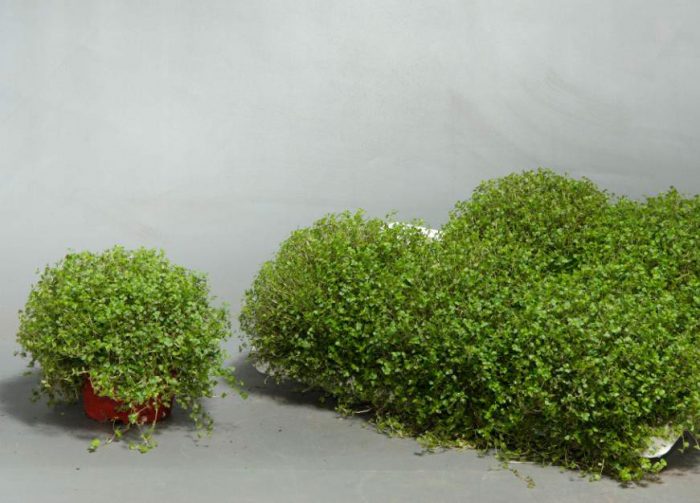


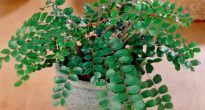

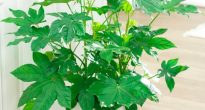


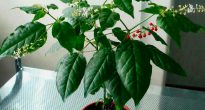


Soleirolia is very beautiful and unusual. The main thing when leaving is good lighting. I have it on the northwest window. Artificial illumination or lack of light does not tolerate well - thin stems stretch and lose their appearance. Watering, yes, it is necessary often, at least once every 3 days. Once I missed watering on time and it wilted all over, stood as if boiled. I flooded it for 2 days in a row, came to life and got its previous appearance. Do not spray because of the density of the stems - mold will appear.